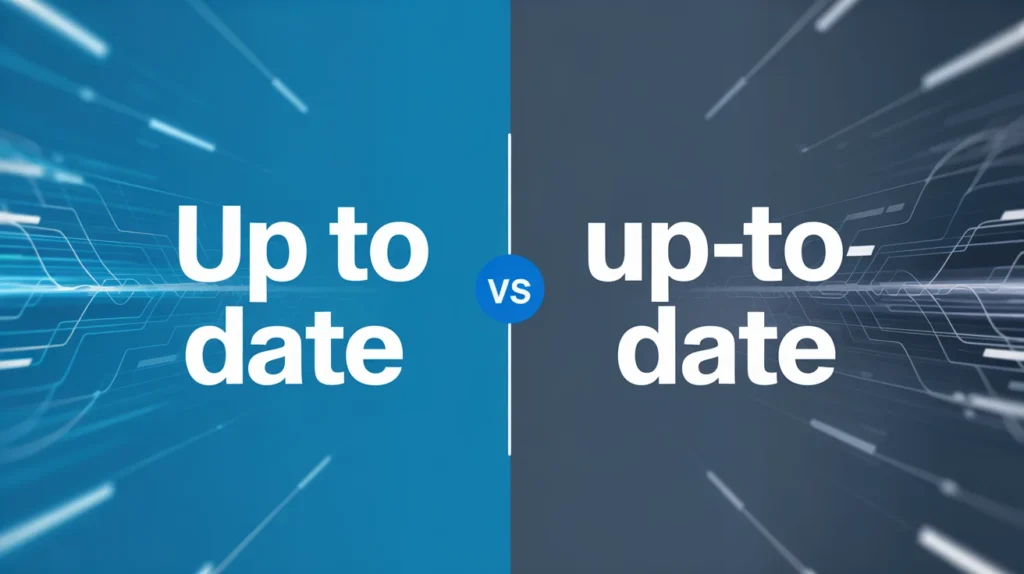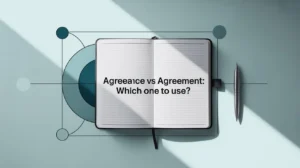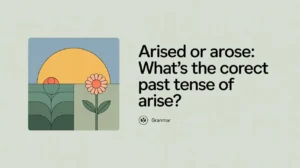Language can be tricky. One day you’re confidently writing an email, the next you’re second-guessing whether that phrase should have a hyphen. Sound familiar? If you’ve ever hesitated between using “up to date” vs “up-to-date,” you’re not alone. This isn’t just a grammar nitpick—using the wrong version can change the clarity and tone of your message.
While the words themselves are the same, the hyphen makes all the difference. Whether you’re writing a resume, updating a blog post, or drafting a business proposal, knowing when to use each form is essential for polished and professional writing.
In this post, we’ll break down the rules (with lots of examples), explore the origin of the phrases, and help you choose the right one every time. You’ll also find helpful tools like decision charts, synonym lists, and real-world examples that make it easy to master.
Let’s get you confidently writing content that’s truly up to date—and perfectly up-to-date.
Quick Answer: “Up to Date” vs. “Up-to-Date”
Here’s the simplest way to remember the difference:
| Phrase | Function | Use When… | Example |
| Up to date | Adverbial phrase | Describing a state or action | “The software is up to date.” |
| Up-to-date | Adjective phrase | Describing a noun | “We use up-to-date equipment.” |
Common Examples
- “Keep your antivirus up to date.” (Adverb – no hyphen)
- “He has an up-to-date portfolio.” (Adjective – hyphenated)
Why the Confusion?
The confusion comes from the fact that the same words are used in both versions—but their grammatical roles change based on usage.
Here’s why people get tripped up:
- Hyphenation rules in English can feel inconsistent.
- Both forms look correct to the eye and ear.
- Autocorrect and grammar tools don’t always catch the nuance.
Also, many writers aren’t taught how function affects form, especially when it comes to compound adjectives and adverbial phrases.
What Does “Up to Date” Mean? (No Hyphens)
“Up to date” is used as an adverbial phrase. This means it modifies a verb, showing how something is done or the condition it’s in.
Examples:
- “She kept her records up to date.”
- “Make sure your training is up to date.”
- “Are your skills up to date with industry trends?”
Key Rule:
If the phrase comes after a verb, and it’s describing a state or condition, skip the hyphen.
What Does “Up-to-Date” Mean? (With Hyphens)
“Up-to-date” is used as a compound adjective. It modifies a noun and almost always appears before it in the sentence.
Examples:
- “We need an up-to-date database.”
- “He brought in up-to-date reports.”
- “The hospital uses up-to-date medical technology.”
Key Rule:
If you’re describing a noun directly before the phrase, hyphenate it.
“Up to Date” vs. “Up-to-Date”: Side-by-Side Comparison
Here’s a handy table to illustrate the contrast clearly:
| Feature | Up to Date (No Hyphen) | Up-to-Date (Hyphenated) |
| Part of Speech | Adverbial Phrase | Compound Adjective |
| Function | Describes a verb | Describes a noun |
| Sentence Placement | After the verb | Before the noun |
| Example | “Is the software up to date?” | “We have up-to-date software.” |
| Hyphen Required? | No | Yes |
When to Use “Up to Date” (Adverbial Use)
Use “up to date” when you’re describing a state or condition, especially after verbs like:
- Stay
- Remain
- Keep
- Be
- Get
- Bring
Common Examples:
- “You need to stay up to date with tax regulations.”
- “Our licenses are up to date.”
- “She’s always working to keep her knowledge up to date.”
When to Use “Up-to-Date” (Adjectival Use)
Use “up-to-date” when placing the phrase before a noun. It acts as a descriptor, helping readers quickly understand the quality or status of that noun.
Common Noun Pairings:
- Up-to-date information
- Up-to-date systems
- Up-to-date records
- Up-to-date education
- Up-to-date technology
Examples:
- “We invested in up-to-date equipment.”
- “Their files aren’t up-to-date, which caused issues.”
- “He built an up-to-date website for the client.”
Context is Everything: Understanding Function Before Form
If you’re not sure which form to use, ask:
- ❓ Is this phrase modifying a noun? Use the hyphen.
- ❓ Is this phrase coming after a verb? No hyphen needed.
Quick Grammar Test:
- ✅ “We need up-to-date software.” (Describes “software”)
- ✅ “Our software is up to date.” (Describes “is”)
- ❌ “We need up to date software.” (Missing hyphens)
Synonyms for “Up to Date” (Adverbial Phrase)
Here are adverbial alternatives you can use to vary your language:
- Currently
- At present
- As of now
- In the loop
- Aware
- Caught up
Example in Use:
- “Stay in the loop about company changes.”
- “Are your documents currently accurate?”
Synonyms for “Up-to-Date” (Adjective Phrase)
These are solid replacements when you need a fresh word:
- Modern
- Current
- Latest
- Contemporary
- State-of-the-art
- Cutting-edge
- Recent
Example in Use:
- “They use modern designs and techniques.”
- “That’s a state-of-the-art piece of equipment.”
Choosing the Right Phrase or Synonym Based on Tone and Audience
Audience and context matter—big time. Here’s how to pick wisely:
| Setting | Best Choice | Why It Works |
| Academic | “Current” or “recent” | Sounds scholarly, neutral |
| Business | “Up-to-date” | Professional, industry-appropriate |
| Casual Writing | “Modern” or “latest” | Easy to read, conversational |
| Technical | “State-of-the-art” | Emphasizes innovation |
Real-World Examples in Context
Media and Tech:
- “Google’s algorithm is always up to date with new content.”
- “They launched an up-to-date SEO tool.”
Education:
- “Our training materials are kept up to date.”
- “We provide up-to-date career counseling resources.”
Healthcare:
- “Keep your medical history up to date.”
- “The hospital uses up-to-date protocols.”
The History and Evolution of the Phrase
- “Up to date” first appeared in the late 1800s, referring to being “modern or fashionable.”
- It gained popularity in British English, then crossed over to American English.
- The hyphenated version likely developed for clarity as compound adjectives became more common in formal writing.
- Today, style guides universally accept the split—each used for distinct purposes.
Style Guide Recommendations: AP, Chicago, MLA, and More
| Style Guide | Recommendation |
| AP Style | Use hyphens for compound adjectives: “up-to-date info” |
| Chicago | Same as AP; prioritize clarity with hyphenation |
| MLA | Consistent with grammatical function |
| APA | Follow grammatical role; hyphenate adjectives |
📌 Tip: If you’re writing for a specific publication, check their style guide.
Final Takeaways: A Simple Rule to Remember
Here’s your cheat sheet:
- ✅ Use “up to date” when it follows a verb. (No hyphen)
- ✅ Use “up-to-date” when it comes before a noun. (Hyphen it)
If in doubt, test the sentence:
👉 Can you remove the noun and the phrase still makes sense? Probably no hyphen is needed.
FAQ: Common Questions Answered
Q: Can “up-to-date” ever be a noun?
No. It’s always either an adjective (with hyphens) or an adverbial phrase (without hyphens).
Q: Can I skip hyphens in informal writing?
Technically yes, but it weakens your writing. Hyphens improve readability.
Q: Does this rule apply to other phrases?
Yes! Think of:
- “Long-term” vs “long term”
- “Well-known” vs “well known”
Q: Is this grammar rule evolving?
Somewhat. But standard grammar still favors these distinctions.
Final Thoughts
Knowing the difference between “up to date” vs “up-to-date” isn’t just about grammar—it’s about writing clearly, confidently, and professionally. Whether you’re polishing up a LinkedIn profile or publishing on your website, these rules help ensure your message lands the way you want it to.
And now that you’re fully up to date on this topic, you’re ready to write content that’s as up-to-date as it gets.

Emma Rose is an experienced English educator, writer, and language enthusiast dedicated to helping learners unlock the full power of the English language. At SynoEnglish, she shares practical grammar tips, clear explanations, and real-world language insights to make learning both effective and enjoyable. With a passion for words and a love for clarity, Emma’s goal is to help readers speak and write with confidence.



